The Winter of Artifice Read online
Page 2
There was tacked on Hans’ door a paper with his name and address carefully printed. I asked him:
“Are you afraid to forget your name and who you are and where you live? Have you ever feared amnesia, or wanted it? I have desired it because it is like an atrophy of the ideal self. The conscience goes to sleep, and therefore the critical self. You can then walk the streets and act as you please without qualms. It is only our name, our address and our relations which bind us, like so many memoranda, to the role which is expected of us. The important thing is not to perpetually resemble that fixed image of ourselves, but to create and believe in transformations.” (Nin 1939, 54)
The draft and published versions differ significantly. Most obviously, the narrator has changed from third person to first, and Rab has become Hans. In addition to rethinking issues relating to narrative and character before deciding on the final text, Nin adopted some of Miller’s recommendations. Among them: “which only means” has disappeared, “memorandums” has become “memoranda,” and the penultimate sentence has been revised beneficially. She did not reduce the number of ands and buts.
Valerie Harms suggests that Miller’s “criticism [of Nin’s writing] was as merciless and exaggerated as was his own writing, and for Nin to survive it, without being destroyed, strengthened her” (Harms 1986, 113). I would not characterize as merciless Miller’s comments about this one paragraph in the “Djuna” typescript, though they are direct; nor would I call them exaggerated. Miller offers solid advice forthrightly. That Nin accepted most of his recommendations indicates her agreement with them at the time. Because the published version is superior to the draft paragraph, one can conclude that at least in this instance he influenced her writing positively.
Nin later acknowledged the validity of Miller’s comment that the noncritical nature of diary writing makes unaltered diary entries inappropriate in fiction. Writing to Felix Pollak in 1955 about The Winter of Artifice, she comments, “It was my first attempt to transpose the Diary material, it was naively exaggerated” (Nin and Pollak 1998, 25). Indeed, because diary material serves as the basis for the three novellas (and because “Lilith” and “The Voice” have been published frequently since 1939, thugh in revised form), significant parts of the plots are now familiar. “Djuna” is Nin’s earliest published rendering of the now-famous interaction among Nin (Djuna), Henry Miller (Hans), and June Miller (Johanna), which Nin details more fully in The Diary of Anaïs Nin, 1931-1934 and Henry and June. Events in “Lilith” are based on the reunion of Nin and her father, Joaquín Nin, as presented in The Diary of Anaïs Nin, 1931-1934 and Incest ; those in “The Voice,” on the relationship between Nin and analyst Otto Rank as depicted in The Diary of Anaïs Nin, 1931-1934 ; Incest ; and Fire.
One paragraph in “Djuna” illustrates the astuteness of Miller’s and Nin’s comments about Nin’s use of diary material in fiction. As Nin’s passion and love for June develop in the diary published as Henry and June — now probably the published text most contemporaneous with the event — the author learns that June likes wearing sandals but cannot afford them. In an entry dated January 1932, Nin decides to buy her a pair:
We went to the sandal shop. In the shop the ugly woman who waited on us hated us and our visible happiness. I held June’s hand firmly. I commandeered the shop. I was the man. I was firm, hard, willful with the shopkeepers. When they mentioned the broadness of June’s feet, I scolded them. June could not understand their French, but she could see they were nasty. I said to her, “When people are nasty to you I feel like getting down on my knees before you.” (Nin 1986, 24-25)
In “Djuna,” the paragraph reads as follows:
We went to the shoe shop. There the ugly woman who waited on us hated us and our visible joy. I held Johanna’s hand firmly and commanded. I was firm, wilful with the shopkeeper. Give me this, the best — don’t you see, it’s for Johanna? The best then, the very best you have. When the woman said she did not have broad enough sandals for Johanna’s foot, I scolded her. And then to Johanna: “When people are nasty to you I feel like getting down on my knees before you. I love you, Johanna.” (Nin 1939, 72)
Nin crafted this fictional scene out of diary material that presumably reflects an actual event. She retained the development and much of the wording of the “original” material, but refined it for publication in 1939. The fictional version seems generally superior to the nonfictional one.
For “Djuna,” Nin wisely deleted the fifth and eighth sentences from the text of Henry and June. The first of them is unnecessary. In describing herself as “firm, wilful,” Djna adequately identifies masculine qualities, making “I was the man” redundant. There is also no good reason for retaining the eighth sentence. By this point in the novella, Djuna has characterized Johanna as unsophisticated, poor, and primal. Saying that this American who has spent little time in France is ignorant of French would seem unnecessarily critical. Further, having Johanna observe the shopkeeper’s nastiness would be inappropriate because Djuna implies the clerk’s rudeness in her direct statement to Johanna.
As Nin deleted sentences from the diary version of this scene when writing “Djuna,” shealso added sentences to it. In two new sentences beginning “Give me this, the best,” Djuna emphasizes the depth of her affection for Johanna, although the first sentence would have conveyed this emotion adequately. Another new sentence at the end of the paragraph makes Djuna’s point obvious: “I love you, Johanna.” The additions strike me as redundant.
A beneficial change in this paragraph concerns the woman who waits on the customers. In the earlier version, she is one of at least two shopkeepers; in the later, she is the only shopkeeper. Making her the sole person involved with Djuna and Johanna eliminates an extraneous person or people, thereby sharpening focus.
Comparing this one paragraph in Henry and June and its revision in “Djuna” supports Nin’s claim that in writing The Winter of Artifice Nin “transpose[d]” material from her diary. Whether her use of the diary in the service of fiction was “naively exaggerated,” though, depends on what she means by this phrase. If her comment to Pollak means that she failed adequately to transform occasional episodes from the diary for use in The Winter of Artifice,she might be correct, although she did modify them, sometimes effectively. She errs, though, in telling Pollak that she first used the diary for fictional purposes in The Winter of Artifice. It serves as a basis for characters and events in The House of Incest (1936) and in some of her short fiction published before 1939.
Whatever the reasons for Nin’s dissatisfaction with the collection of novellas published in Paris, she revised it substantively for publication as Winter of Artifice in 1942. The later edition includes only two novellas: one without title that had been “Lilith,” and “The Voice.” Other than omitting “Djuna,” an altered point of view is the most important revision. In The Winter of Artifice, the first two novellas are told in the first person; the last, in the third. The two novellas in the revised edition are told in the third person, thereby creating narrative unity between these texts that concern Lilith prominently, though she is unnamed in the first one. The adjusted point of view also helps increase certainty. In the 1939 edition, narrator Lilith occasionally thinks she knows what another character means; in the 1942 text, the third-person narrator is certain. In the Paris edition, for example, Lilith interprets her father’s initial comments to her: “It seemed to me that his first words were words of apology” (Nin 1939, 123). Revised, the father’s meaning is unambiguous: “His first words were words of apology” (Nin 1942, 18). The difference matters, though Nin could have made Lilith’s statement definite had she changed it within Lilith’s own narrative.
Nin made other modifications to “Lilith.” Sometimes, individual words, sentences, and even paragraphs of the 1939 edition are omitted from the 1942 text. Here is a paragraph that appears only in the earlier edition, wherein Lilith refers to her experiences during the decades she was separated from her father:
&n
bsp; It was this absorption in the need of the other which was at the root of all the mysteries of my life — at the root of my silences, my evasions, my lies. A sensitiveness to what my father did not want to hear prevented me even from picturing the scenes I had enjoyed. I was perpetually recomposing the scene in such a way that it would bring a balm to his egoism, a lull to his jealousy. (Nin 1939, 138)
Nothing of which I am aware indicates why Nin excluded this paragraph from the revised text. She possibly did so because it relates too much, especially in the first sentence, where Lilith conveys her understanding of the reason for her problems. Perhaps Nin realized that letting a character’s actions reveal emotional realities is generally preferable to explaining them.
Nin altered significantly the 1939 version of “The Voice” before publishing the novella in 1942. She removed every mention of Hans, which necessitated deleting passages as long as two pages. Other deletions indicate that she was aware of American censors or of the presumably delicate sensibilities of American readers, or both. Among the material present in the Paris edition but absent from the later one: the scene in which Lilith bares her breasts to the Voice (Nin 1939, 238-39), a passage dealing with an erection (244-45), Lilith’s ménage à trois with Harold and Arline and later the two women’s sexual encounter (248-51), Lilith’s calling Djuna a bitch (254), and Djuna’s reference to her and Lilith’s menstrual periods (255). Nin also deleted material relating to Georgia and Mischa, as well as the entire scene of Lilith and the Voice vacationing. Further, Nin omitted less dramatic material, occasionally at the end of paragraphs, possibly because it is redundant. She tightened prose, as when describing Lilith’s response to the Voice’s statement that “a real woman” cannot successfully live life alone: “I must have become a real woman right here, for I feel the dependence now, and I don’t mind it. I like it” (276) becomes “I don’t mind my dependence on your interpretations” (Nin 1942, 139).
In sum, Nin made many changes to The Winter of Artifice before publishing two of the novellas in Winter of Artifice. The nature of the alterations indicates that Nin matured as a writer between the first two editions of her collection of novellas.
I have explained reasons for Nin’s dissatisfaction with The Winter of Artifice. As Nin acknowledges, it shows the influence of Henry Miller. Even with his assistance, however, she did not create polished fiction. Perhaps the flaws of the 1939 edition are understandable. Nin — an author admittedly not then fully rom the rtable with English — was writing in a form that was new to her: relatively long, relatively realistic fiction. Each novella is much longer and more realistic than her first volume of fiction, The House of Incest, a prose-poem of slight plot and externally ill-defined characters. Yet Nin’s accomplishment in The Winter of Artifice is important. Within imperfect plots substantial enough to hold readers’ attention, Nin effectively examines the emotional difficulties of Djuna, Lilith, and the Voice, precisely as she addresses similar problems with the major characters in the five novels beginning with Ladders to Fire (1946). The Winter of Artifice also illustrates the manner in which Nin adapted diary material for fictional purposes. Further, her revisions of “Lilith” and “The Voice” serve as a basis for documenting her maturation as a writer between the 1939 publication of the book and the appearance of the revised edition only three years later.
The Winter of Artifice is Nin’s most neglected book because from almost immediately after its publication until now it has been unavailable and therefore unknown. After its only reviews (one in 1939, another in 1940), it received no critical comment of which I am aware. Even Nin’s two major biographers, Deirdre Bair and Noël Riley Fitch, mention it only in passing. Some Nin scholars, such as Rose Marie Cutting, assume that all its editions are identical. For literary and scholarly reasons, then, this republication of The Winter of Artifice, two-thirds of a century after its first appearance, satisfies the greatest need relating to Nin’s fiction.
Benjamin Franklin V
University of South Carolina
Works Cited
Armstrong, James, and Gary Miers. 2003. Of Obelisks and Daffodils: The Story of Jack Kahane and the Obelisk Press. Portland, ME: Handsack Press.
Bair, Deirdre. 1995. Anaïs Nin: A Biography. New York: Putnam’s.
Cutting, Rose Marie. N.d. Anaïs Nin: A Reference Guide. Boston: G. K. Hall.
Durrell, Lawrence, and Henry Miller. 1988. The Durrell-Miller Letters, 1935-80. Edited by Ian S. MacNiven. London: Faber and Faber.
Fitch, Noël Riley. 1993. Anaïs: The Erotic Life of Anaïs Nin. Boston: Little, Brown.
Girodias, Maurice. 1980. The Frog Prince: An Autobiography. New York: Crown.
Harms, Valerie. 1986. “Interaction and Cross-Fertilization: Notes on the Influence of Henry Miller on Anais Nin’s Early Fiction.” In Anais: An International Journal 4: 109-15.
Jason, Philip K. 1984. “The Gemor Press.” In Anais: An International Jornal 2: 24-39.
MacNiven. Ian S. 1998. Lawrence Durrell: A Biography. London: Faber and Faber.
Martin, Jay. 1978. Always Merry and Bright: The Life of Henry Miller, an Unauthorized Biography. Santa Barbara: Capra Press.
Miller, Henry. 1988. “About the ‘Mona’ Pages.” In Anais: An International Journal 6: 93-103.
Nin, Anaïs. 1939. The Winter of Artifice. Paris: Obelisk Press.
–-. 1942. Winter of Artifice. N.p: n.p.
–-. 1966. The Diary of Anaïs Nin, 1931-1934. Edited by Gunther Stuhlmann. New York: Swallow Press/Harcourt, Brace World.
–-. 1969. The Diary of Anaïs Nin, 1939-1944. Edited by Gunther Stuhlmann. New York: Harcourt, Brace World.
–-. 1973. “The Story of My Printing Press.” In The Publish-It-Yourself Handbook: Literary Tradition How-To, 39-42. Edited by Bill Henderson. Yonkers: Pushcart Book Press.
–-. 1986. Henry and June: From the Unexpurgated Diary of Anaïs Nin. San Diego: Harcourt Brace Jovanovich.
–-. 1987. “Into the Heraldic Universe: Letters to Lawrence Durrell, 1937-1939.” In Anais: An International Journal 5: 73-98.
–-. 1989. “Hans and Johanna.” In Anais: An International Journal 7: 3-22.
–-. 1996. Nearer the Moon: From a Journal of Love, the Unexpurgated Diary of Anaïs Nin, 1937-1939. New York: Harcourt, Brace.
–-, and Felix Pollak. 1998. Arrows of Longing: The Correspondence between Anaïs Nin and Felix Pollak, 1952-1976. Edited by Gregory H. Mason. Athens: Swallow Press/Ohio University Press.
P[ollak], F[elix]. 1952. “Anais Nin Manuscripts.” In Northwestern Library News 6 (42): 1-2.
Shifreen, Lawrence J., and Roger Jackson. 1993. Henry Miller: A Bibliography of Primary Sources. Ann Arbor, MI, and Glen Arm, MD: Roger Jackson and Lawrence J. Shifreen.
Vaid, Krishna Baldev. 1987. “Writing and Wandering: A Talk with Anais Nin.” In Anais: An International Journal 5: 49-55.
Van der Elst, Marie-Claire. 1978. “The Manuscripts of Anaïs Nin at Northwestern.” In Mosaic: A Journal for the Comparative Study of Literature and Ideas 11 (2): 59-63.
Zee, Nancy Scholar. 1972. “A Checklist of Nin Materials at Northwestern University Library.” In Under the Sign of Pisces: Anaïs Nin and Her Circle 3 (2): 3-11.
NOTES
1. The titles listed in this note — all published after Nin’s death — are arranged chronologically within categories. I cite only first editions. The volumes of Nin’s diary are Linotte: The Early Diary of Anaïs Nin, 1914-1920, translated by Jean L. Sherman (New York: Harcourt Brace Jovanovich, 1978); The Diary of Anaïs Nin, 1966-1974, edited by Gunther Stuhlmann (New York: Harcourt Brace Jovanovich, 1980); The Early Diary of Anaïs Nin, Volume Two, 1920-1923 (New York: Harcourt Brace Jovanovich, 1982); The Early Diary of Anaïs Nin, Volume Three, 1923-1927 (San Diego: Harcourt Brace Jovanovich, 1983); The Early Diary of Anaïs Nin, Volume Four, 1927-1931 (San Diego: Harcourt Brace Jovanovich, 1985); Henry and June: From the Unexpurgated Diary of Anaïs Nin (San Diego: Harcourt Brace Jovanovich, 1986); Incest: From a Journal of Love, the Unex
purgated Diary of Anaïs Nin, 1932-1934 (New York: Harcourt Brace Jovanovich, 1992); Fire: From a Journal of Love, the Unexpurgated Diary of Anaïs Nin, 1934-1937 (New York: Harcourt Brace, 1995); and Nearer the Moon: From a Journal of Love, the Unexpurgated Diary of Anaïs Nin, 1937-1939 (New York: Harcourt Brace, 1996). The volumes of letters are A Literate Passion: Letters of Anaïs Nin and Henry Miller, 1932-1953, edited by Gunther Stuhlmann (San Diego: Harcourt Brace Jovanovich, 1987); Letters to a Friend in Australia (Melbourne: Nosukumo, 1992); and Arrows of Longing: The Correspondence between Anaïs Nin and Felix Pollak, 1952-1976, edited by Gregory H. Mason (Athens: Swallow Press/Ohio University Press, 1998). The volumes of erotica are Delta of Venus (New York: Harcourt Brace Jovanovich, 1977) and Little Birds (New York: Harcourt Brace Jovanovich, 1979). The volumes with contents drawn from one or both of these books are The Illustrated Delta of Venus (London: W. H. Allen, 1980), with photographs by Bob Carlos Clarke; A Model and Other Stories (London: Penguin, 1995); Stories of Love (Ringwood, Victoria, Australia: Penguin, 1996); Fragments from the Delta of Venus (New York: powerHouse Books, 2004), with illustrations by Judy Chicago; and Artists and Models (London: Penguin, 2005). The collection of stories is Waste of Timelessness and Other Early Stories (Weston, CT: Magic Circle Press, 1977). The volume of erotica attributed to Nin and others is White Stains (London: Delectus Books, 1995).

 Diary of Anais Nin, Volume 5
Diary of Anais Nin, Volume 5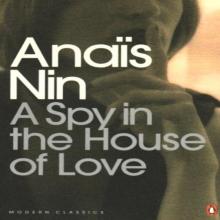 A Spy in the House of Love
A Spy in the House of Love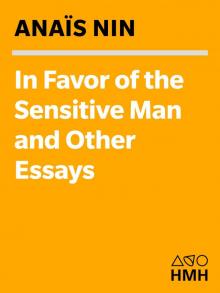 In Favor of the Sensitive Man and Other Essays (Original Harvest Book; Hb333)
In Favor of the Sensitive Man and Other Essays (Original Harvest Book; Hb333)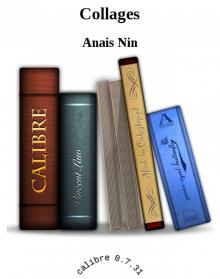 Collages
Collages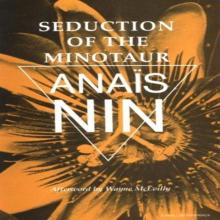 Seduction of the Minotaur
Seduction of the Minotaur Children of the Albatross
Children of the Albatross Delta of Venus
Delta of Venus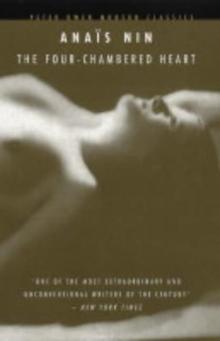 The Four-Chambered Heart coti-3
The Four-Chambered Heart coti-3 Diary of Anais Nin, Volume 2
Diary of Anais Nin, Volume 2 Diary of Anais Nin, Volume 1
Diary of Anais Nin, Volume 1 Diary of Anais Nin, Volume 4
Diary of Anais Nin, Volume 4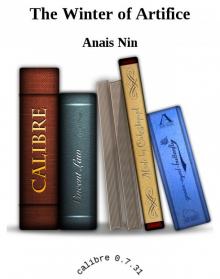 The Winter of Artifice
The Winter of Artifice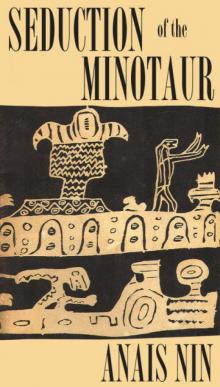 Seduction of the Minotaur coti-5
Seduction of the Minotaur coti-5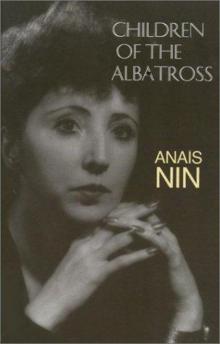 Children of the Albatross coti-2
Children of the Albatross coti-2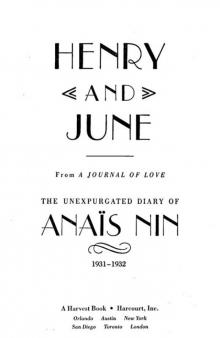 Henry and June: From A Journal of Love -The Unexpurgated Diary of Anaïs Nin (1931-1932)
Henry and June: From A Journal of Love -The Unexpurgated Diary of Anaïs Nin (1931-1932) Ladders to Fire
Ladders to Fire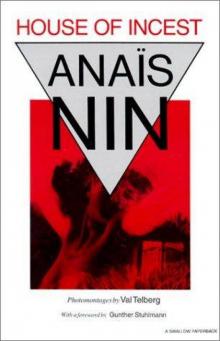 House of Incest
House of Incest